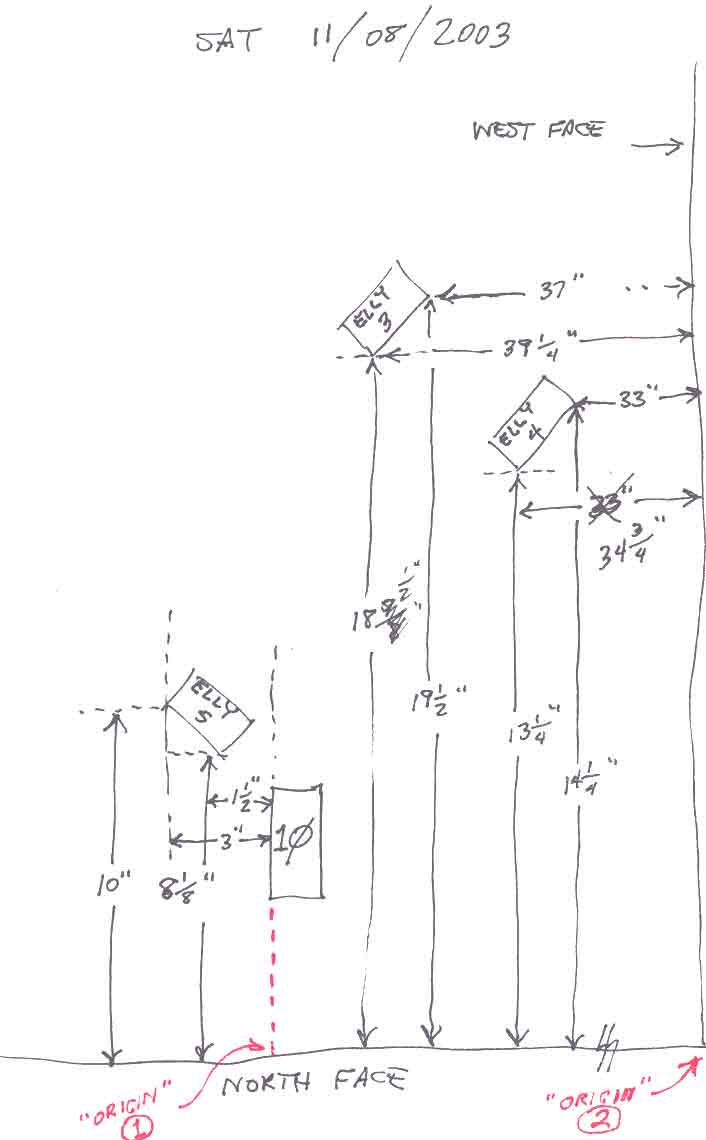Note: The word "Cartesian" is always spelled with a capital C in honor of Rene Descartes (Renatus Cartesius), the famous French mathematician who invented this sort of thing in the first half of the 17th Century.
The notes in red at the bottom of the sketch say "origin 1" and "origin 2". An origin, in a Cartesian coordinate system, is a point from which measurements originate. Since our east-west measurements originate in two different places (namely, column 10 and the layout's west face), we have two "origins".
Why do we need to know this? The reason is that when we finally reduce our actual inch-measurements from the sketch to 1/12-scale measurements in the structural model, we must not forget from which points ("origins") the measurements were taken.
We might think "Why should I forget? I took the measurements myself." However, it is easy to forget details like this if a long period elapses between the time when we write down the inch-measurements and the time when we finally start working on the 1/12-scale model. A day? A week? A month? A year? The words "origin 1" and "origin 2" help to remind us to be very careful when we scale-down our measurments.
